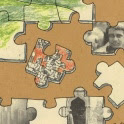The New Landscape by Charles Correa, 1985
The following are some thoughts and ramblings that went across my mind when reading the The New Landscape by Charles Correa. Picking this book up after my completion of the course of architecture was a huge tragedy. I can only imagine how much of a better sensitivity and realness my designs could have portrayed in their conception, which eventually were superficial at best. The book is rightfully said as a must read for every architect/planner willing to practice in India and the ideas and lens of critical thinking are a boon to the profession.
The fact with building the urban world is the higher density that comes along with it. And to bring this to reality, to build forms of over 4 stories, exponentially increases the cost of construction due to the use of RCC. This ultimately marks the price of housing to rise leading to the outcome being only affordable to the upper and middle class, forcing the lower class to move to the street.
Indian cities, for example Mumbai, have a tremendous preference or obligation to housing where road area comes to about 20% and green spaces to a meager 1% - 5% since housing has this inflated urgency to take shape, the buildings would definitely be built as wide and high as the land permits. The emphasis on the city's public space shouldn't just be grassy green maidans but public squares and promenades the people of all ages, cultures and economic statuses share.
The title 'Space as a Resource' is so aptly written and explain in the essay. The individuality of a plot of land and how the builder or architect ceases to value the surrounding as a city context is not entirely of fault of their own. It is but a consequence, created by the planning authority who on the compulsion to provide living spaces in the city have to omit other necessities like play & rest.
The solution though is not simple. But, the awareness of the problem can allow for progressive ideas to evolve and their involvement or reality can shape a new coming of age to a city riddled with the illusion of a better life.
The idea of Navi Mumbai (New Bombay) was revolutionary because it doesn't let a city expand slowly, but another city as a marker was set where linkages were realised and to its links would in future establish smaller instances of the bigger city. This would make them better designed and better looked after. Multi modal transport like water and land challenge the American model of city design where the resource of space was recognised and to build more functional individual oriented use of space.
Correa talks about equity in the city and its approach and its realisation. Usually in the planning stage, the planner considers people as statistics and tends to aggregate the amount of people & families as a collective group without realising the amount of history & culture that is attached to them. An aggregate perfect house doesn't suit all! For a planner or architect the idea of aggregation makes sense and reduces their workload. The drawings become simpler & the reports become slimmer. And the government has no issues.
Feel it is how architects are renumerated for the work. If you are usually overworked and underpaid for even building a simple template house, then why would you go out of your way to broaden your horizon? Why would you consider the overall city when it doesn't seem to consider you? The field of architectural design and the innovation that comes with it is spearheaded by the passionate who through their hard work and low renumeration strive to create. But how long can it last? This creative work also comes at the price of grueling work by the juniors in the field with them facing abuse, as the labor. It is a rigged system that pushes the blame on to the next smaller individual.
As Correa says, 'Mumbai can be called a great city but a terrible place', similarly, Architecture is a great profession but a terrible occupation!
Final thoughts.
Each essay in the book is aptly shown as a puzzle piece, a small bite size pocket of information that correlates itself to the next piece, enough in similarity to match with its predecessor but also unique with its idea to come together and form a bigger picture. This then connects to the title: the New Landscape, or for me the new vision of looking at a city and the ones that will form after it. The idea is deliberate, new and revolutionary. It is to be credited to Charles Correa, and how he can break down a concept so complex into a simple linear story line, that when viewed from the outside becomes a web. Even though published in the 1980s, are still relevant and as unknown to the people creating our forthcoming landscapes.
Credits: Cover of 'The New Landscape' by Charles Correa, published 1985 by The Book Society of India, Mumbai. Image courtesy of Charles Correa Foundation. Image sourced from charlescorreafoundation.org


Ek dum jhakass
ReplyDelete